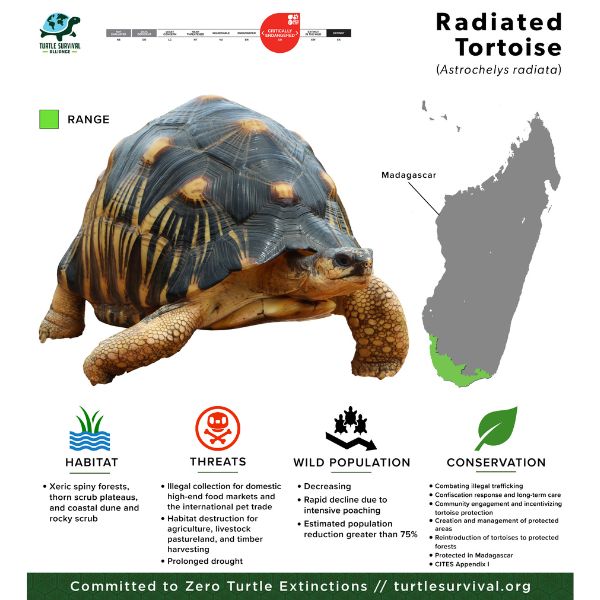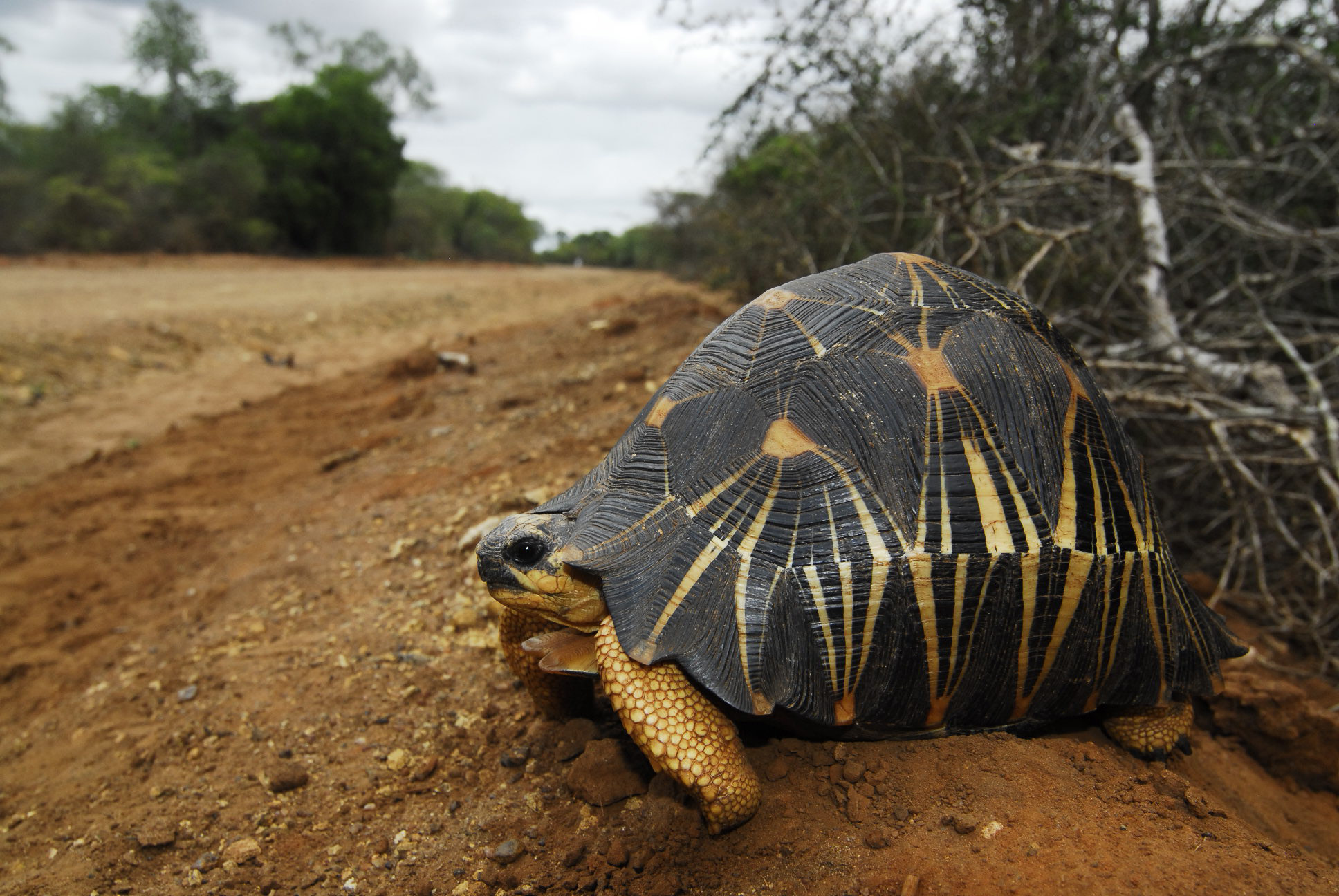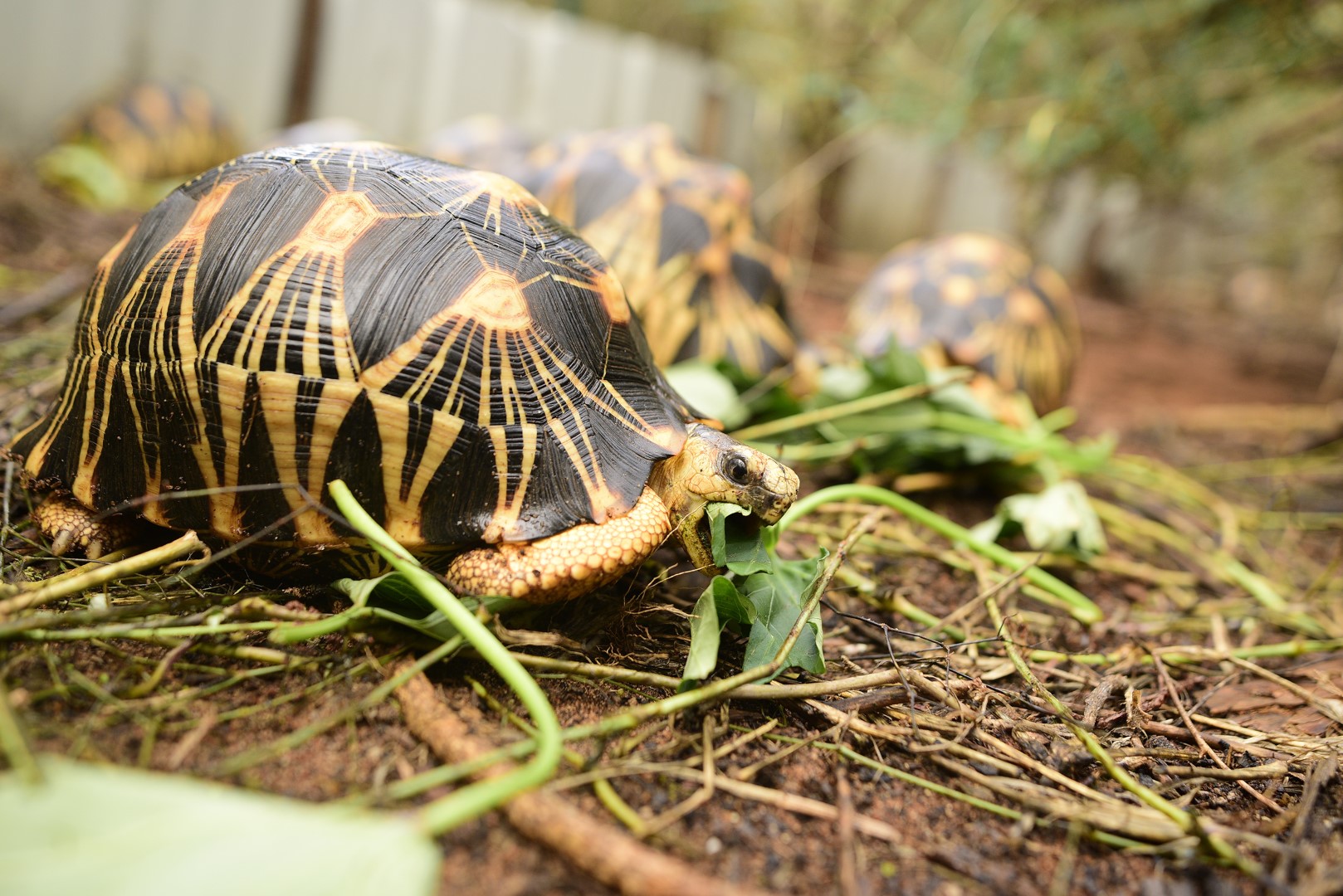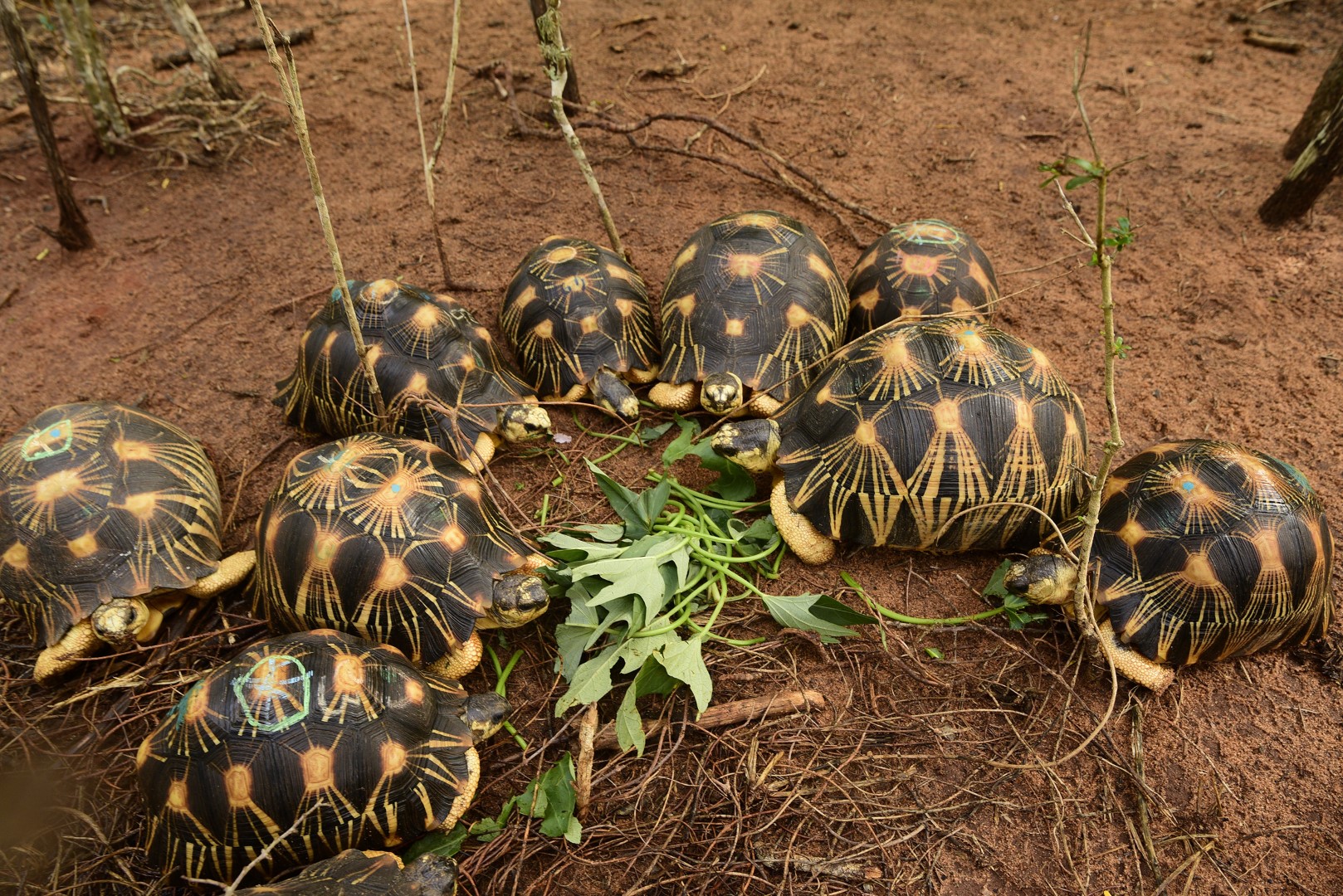Madagascar’s Radiated Tortoise (Astrochelys radiata), was once one of the most abundant tortoises on earth, with an estimated historic population of 12 million tortoises. Protected over the years by a strong cultural taboo among the local tribes known as “fady”, sadly this custom has broken down due to an influx of outsiders to the region, placing this tortoise at peril. In recent years this beautiful tortoise has undergone a catastrophic population decline and is now ranked Critically Endangered by the IUCN Red List. This story is eerily similar to that of the American Bison which was systematically eliminated in a relatively short period of time. The Radiated Tortoise is now gone from roughly 65% of its former range, with an estimated population reduction of 80% over the past two decades.
Habitat conversion contributes to this crisis, but the illegal wildlife trade is overwhelming the primary driver of the species’ decline. Adults are harvested for the local bushmeat trade while juveniles are widely collected and smuggled out of the country for the black-market pet trade, primarily destined for China and SE Asia. The removal of both age classes heavily impacts the ability of tortoise populations to recover. Though this crisis has garnered worldwide attention, one organization – Turtle Survival Alliance – has taken the lead on addressing the situation. The Alliance has aggressively confronted the poaching crisis through heightened awareness, both locally and internationally, and through improving the capacity for local enforcement. Anticipating these actions would result in an increase in confiscated tortoises, we constructed infrastructure to enable us to effectively deal with trade seizures. Five small rescue facilities and two large tortoise conservation centers were built, all part of our comprehensive Confiscation to Reintroduction Strategy. The number of confiscated tortoises has increased dramatically, reaching a peak in 2018 that saw the seizure of 17,000 tortoises. Most of these tortoises were received by the Alliance and today the organization manages ~25,000 rescued and rehabilitated tortoises.
The reintroduction process got underway in 2019 with the identification of potential release sites, and pre-release health assessments and disease screening began in 2020. The first group of 1,000 tortoises were moved to a soft-release enclosure within a community protected forest in 2021 with full release in 2022. Monitoring of tortoise movements is underway to assess the soft- release strategy that is designed to instill site fidelity. Results are extremely encouraging, and another 2,000 tortoises were reintroduced in 2023. Our goal is to repatriate at least 20,000 additional tortoises to the wild over the next 5-8 years.



